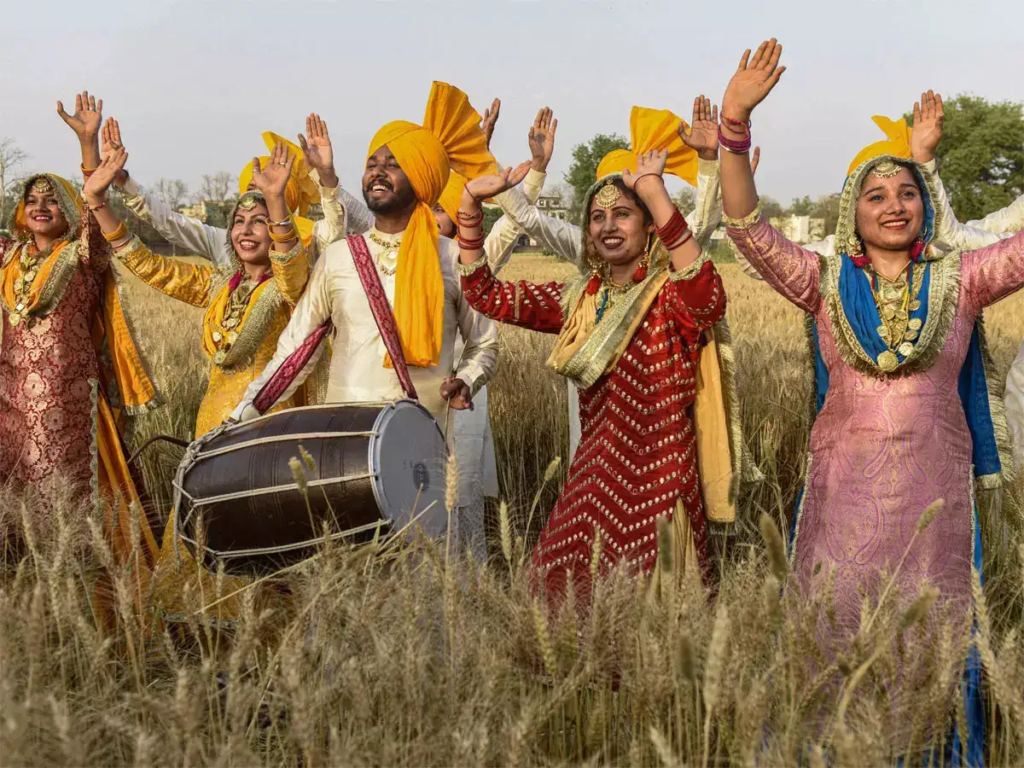
Table of Contents
- Introduction: Baisakhi – Where Faith Meets Harvest
- When Is Baisakhi in 2025?
- Why Baisakhi Is Celebrated: The Dual Significance
- The Spiritual Side: Birth of the Khalsa
- The Agricultural Celebration: Harvesting Happiness
- How Baisakhi Is Celebrated Across Punjab and India
- Gurdwara Ceremonies and Langars
- Dance, Dhol, and Fairs: The Cultural Extravaganza
- Baisakhi in the Fields: A Farmer’s Festival of Gratitude
- Modern Celebrations: Urban Melas and Global Parades
- Conclusion: A Festival That Nourishes Body, Soul, and Soil
1. Introduction: Baisakhi – Where Faith Meets Harvest
Baisakhi is more than just a festival—it’s a vibrant blend of devotion, celebration, and gratitude. Observed every year on April 13 or 14, it marks a powerful turning point in both the Sikh faith and India’s agricultural calendar. In 2025, Baisakhi brings with it the same spirit of unity, abundance, and cultural pride.
2. When Is Baisakhi in 2025?
In 2025, Baisakhi will be celebrated on Monday, April 14. As per the solar calendar, this date marks the start of the Sikh New Year and also the time when farmers begin harvesting the rabi (winter) crop, especially wheat.
3. Why Baisakhi Is Celebrated: The Dual Significance
Baisakhi is unique because it combines:
- A spiritual rebirth – the formation of the Khalsa Panth in 1699 by Guru Gobind Singh Ji.
- An agricultural milestone – the moment of joyous harvesting after months of hard work in the fields.
4. The Spiritual Side: Birth of the Khalsa
On Baisakhi in 1699, Guru Gobind Singh Ji called upon Sikhs at Anandpur Sahib and created the Khalsa, a spiritual and martial collective. This was the day when five brave volunteers, known as the Panj Pyare, offered their heads and were baptized into a new community of warriors devoted to justice, equality, and fearless devotion.
This makes Baisakhi a moment of sacred renewal and identity for Sikhs worldwide.
5. The Agricultural Celebration: Harvesting Happiness
For farmers, Baisakhi is the happiest time of the year. The golden wheat fields shimmer in the sun, promising prosperity and reward. Baisakhi marks the successful end of one farming cycle and the beginning of another, filling villages with music, dance, and joy.
6. How Baisakhi Is Celebrated Across Punjab and India
In Punjab, the celebration begins at dawn:
- People take a holy dip in rivers or sarovars
- Visit Gurdwaras for special kirtans and discourses
- Attend Nagar Kirtans (religious processions with hymn chanting)
- Join community feasts and fairs
Other parts of India also mark the day with their regional New Year festivities:
- Assam celebrates Rongali Bihu
- Tamil Nadu observes Puthandu
- West Bengal welcomes Poila Boishakh
7. Gurdwara Ceremonies and Langars
The spiritual essence of Baisakhi shines through kirtans (devotional music) and katha (spiritual talks) held in gurdwaras. After the prayers, the community gathers for Langar, a free vegetarian meal served to all, symbolizing equality and shared humanity.
8. Dance, Dhol, and Fairs: The Cultural Extravaganza
Step into a Baisakhi mela (fair), and you’re greeted with:
- Bhangra and Gidda performances full of energy
- Loud and joyful dhol beats
- Traditional Punjabi cuisine like sarson da saag, makki di roti, lassi
- Colorful stalls of handicrafts, turbans, and folk art
- Rural sports and contests like kabaddi, wrestling, and turban-tying
9. Baisakhi in the Fields: A Farmer’s Festival of Gratitude
For farmers, Baisakhi is a day of thanksgiving to nature and Waheguru. It is a time to:
- Offer the first grains at the gurdwara
- Celebrate with farmhands and family
- Pray for good monsoon and future harvests
- Reconnect with the earth and its cycles
10. Modern Celebrations: Urban Melas and Global Parades
In cities and around the world—from London to Toronto, New York to Sydney—Sikh communities host:
- Vibrant street parades
- Cultural showcases of music, art, and food
- Interfaith gatherings and public langars
These modern Baisakhi celebrations help spread Punjabi spirit and Sikh identity far beyond the fields of Punjab.
11. Conclusion: A Festival That Nourishes Body, Soul, and Soil
Baisakhi 2025 reminds us that celebration can be deeply spiritual and joyfully cultural at the same time. It unites farmers, devotees, and communities in a shared spirit of gratitude, strength, and hope. Whether you’re dancing to the beat of the dhol or sitting silently in a Gurdwara, Baisakhi speaks to the timeless power of faith and harvest.

